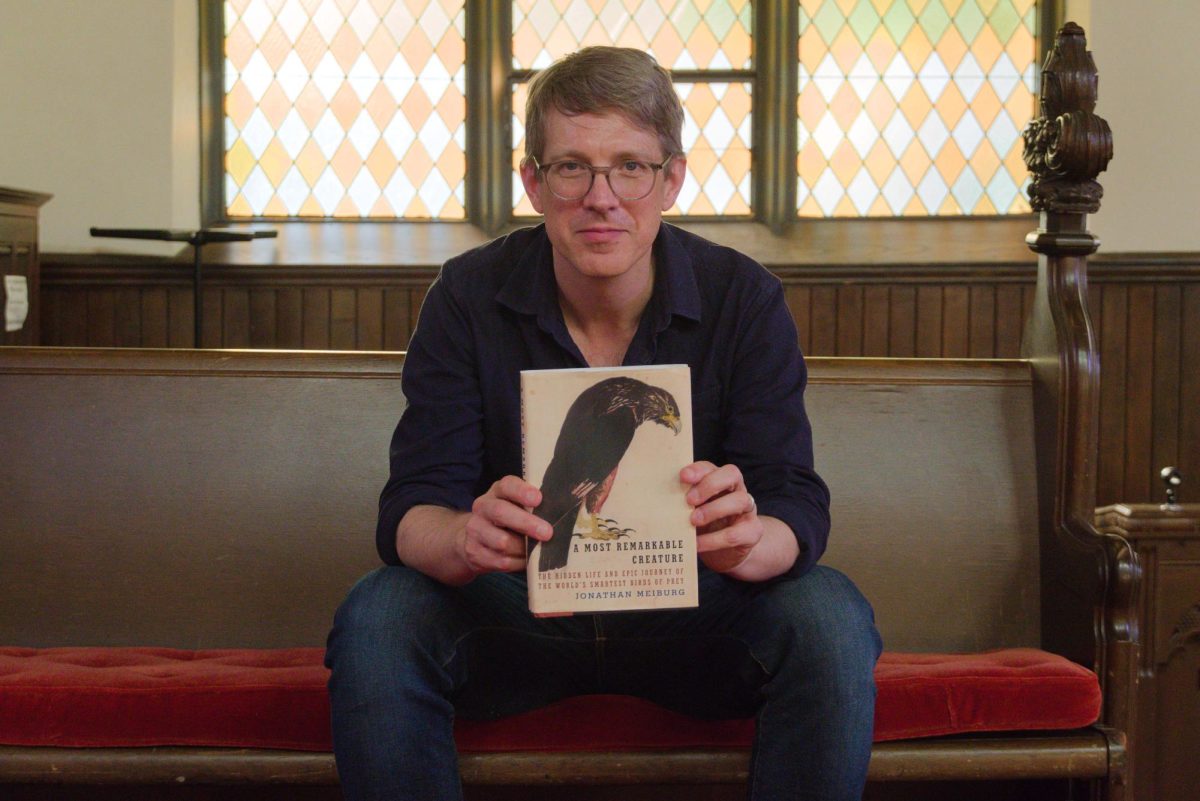Nina Paley is an artist, filmmaker, and free culture activist most known for her feature length movie, “Sita Sings the Blues.” “Sita” has been featured in numerous film festivals, such as the Berlin International Film Festival and Roger Ebert’s Overlooked Film Festival. The animated work retells the ancient Indian epic, the “Ramayana” interwoven with autobiographical segments and the music of 1920s jazz singer Annette Hanshaw. Recently, students from Professor Geller’s Film Genres course interviewed Paley to discuss her artistic motivations, unconventional modes of distribution, and creative process behind “Sita Sings the Blues.”

Could you give us an account of some of the difficulties you encountered with “Sita Sings the Blues,” specifically relating to the Annette Hanshaw songs?
There is much misunderstanding about what actually happened. I made a decision to use old music, which most people don’t do because copyright issues are so contentious that nobody wants to be in the position where they’re having to fight legally. The old Annette Hanshaw songs were so important to the movie, that I decided I was going to use them and since I had no money to begin with and wasn’t looking at making the movie as a business, I’m like, “This is a piece of art that I need to see, that needs to exist; I’m going to make it.”
So I did, however, [try to work within copyright laws] from the very beginning: I contacted the Electronic Censure Foundation, and they put me in touch with American University in DC. So from the beginning there were student attorneys researching exactly what the problem with the music was and what I was getting into. I knew that it would be a fraught process, but it seemed like it was possible. The only alternative would be to not make the movie and I wasn’t willing to accept that—I had to make the movie. I finished the movie, in 2008, and then I wanted to get a distributor because that’s what I heard you do if you have a feature film. In 2008 all the indie distributors were going bankrupt and this sort of fairytale about independent film—you just make the film and then you get a big distributor and they clear all the rights—was not going to happen. It fell upon me to clear the rights to the music. At that time I did want conventional distribution because it didn’t even occur to me that there was an alternative.
So I started the process and was shocked by how unreasonable, insane and Kafka-esque the process is. I learned from other filmmakers just how common self-censorship is—most attempts of independent filmmakers to clear licenses for music result in them just taking out whatever was in there. The process is just impossible, there’s no regulation of how much a right holder can charge for their monopoly. I was quoted $220,000 approximately to use the music, and the budget of the entire movie was under $200,000.
One surprising aspect of the film is how perfectly the songs fit with the context of your story and the “Ramayana”; it really felt like the film was a tribute to Hanshaw’s work, not an exploitation.
If anything the film increased the value of those songs, because Annette Hanshaw was really obscure when I started. However, the system is designed to be an anti-competitive system, the copyright clearance system is not actually designed to generate more money from licensing for these copyright holders. It is just designed to shut out competitors so if they had been interested in releasing more Annette Hanshaw products, the film just would have turned out with increased sales. They’re not interested in people hearing Annette Hanshaw, they’re interested in people not hearing Annette Hanshaw, so that all they can hear is [music] like Britney Spears. They’re interested in controlling the media tube.
So how did you fund “Sita”? And how do you continue to profit without conventional commercial distribution?
When I was making it, I had some savings, but the main expense was food and rent for the three years I was working on it because it was a very low budget movie. I also had some savings from freelance work and, much to my amazement, I got a Guggenheim fellowship in the middle of it. That’s what kept me from moving in with my parents. I took some time off to do freelance work to get more money, and by the end I went into debt. I put the word out: “Send me money, I’ll put your name in the end credits.” I borrowed, I got donations—it was like an early crowd funding experiment. Then, I went way into debt when I put in the old music because it costs $20,000 just to talk to these extortionists because they wouldn’t talk to me directly—I had to hire lawyers, intermediaries—and then I had to pay $50,000 just to decriminalize the film. I didn’t free-license the songs; I just made it legal to share. For every 5,000 copies sold I have to make additional payments, whereas if I paid $220,000 then I wouldn’t have to keep track of all the copies sold. Which funnily enough is kind of an incentive for sharing the film as freely as possible. Why would I want to account for every copy? I don’t want to sell them, I want to give them away!
Now the film is free, I’ve actually earned more money from freeing it than I would have going through a conventional distributor. But the fact that it’s free means people share it with each other, which means people know about it. Many people download it for free and then send me a donation. The voluntary donation model has actually generated as much money for me as ten years of locking it up with a conventional distributor. On top of that there’s the “Sita Sings the Blues” merchandise empire where I sell t-shirts and DVDs. If I were a better storekeeper, I’d be selling a lot more stuff. I don’t advertise it, but even then people look for it and buy things—I myself have received about $50,000 from that. And the more people share the film with each other, the more money I can command if I do any freelance work, if I do speaking gigs.
I was really interested in the autobiographical scenes of the film and their connection with the “Ramayana.” Your presentation of your story in the film is such a different style from the rest of the “Ramayana” narrative. Was that really intentional, or was it just how you would present yourself?
Some of it is that I keep little journals, and they have bare-minimum sketches of things. So the style looks a little bit like when I jot down notes in a journal, that’s how I draw. I must say, that those are my least favorite scenes in the movie, they were the least fun to make and the least fun for me to watch. But they needed to be in there, for many reasons. One is that I wanted to make my point of view very, very clear. Because there I was an American, fair-skinned woman, doing a movie about an ancient Indian epic and it’s very politically dangerous to do that. You know, “How dare this white woman retell a story that is not hers? Why is she doing this?” Rather than trying to hide my biases, I wanted to make them overt. By including those [autobiographical scenes] it is like saying this is a personal story, it is about me, and I am thinking about Ramayana. This is not Ramayana 101, this is not the Telling of the Ramayana. All of these things in this movie are actually about me, and my experiences, through the lens of the Ramayana. Unfortunately, that didn’t quite work— people ignored the personal scenes and insisted that I am saying all these things about the Ramayana. I just wanted to be clear about my point of view.
Another thing about the film is that it is incredibly funny, despite the overarching tragic narrative. Do you find that humor, like drawing, helps with the healing process?
Sometimes people describe humor like it’s a spice or seasoning that you shake onto other things. But it’s not. I don’t even want to call it humor, it’s not separate from the way I think. The truth is funny, it just is. I laugh at a lot of things. If you say it looks funny, it’s not like the universe was trying to be that way. I find things funny and then that’s reflected in my own work. I was striving to be as honest as possible. Because of the way I am, if I’m honest, some of that’s going to seem really funny. People have tried to understand why we laugh, what the relationship is between pain and laughter. I don’t really understand it, but I know that I laugh and I cry, frequently over the same things, and that just came out in the movie.
“Sita Sings the Blues” will play this Friday, April 8, at 7:30 p.m. in JRC 101, followed by a Q & A session with the director.


















































